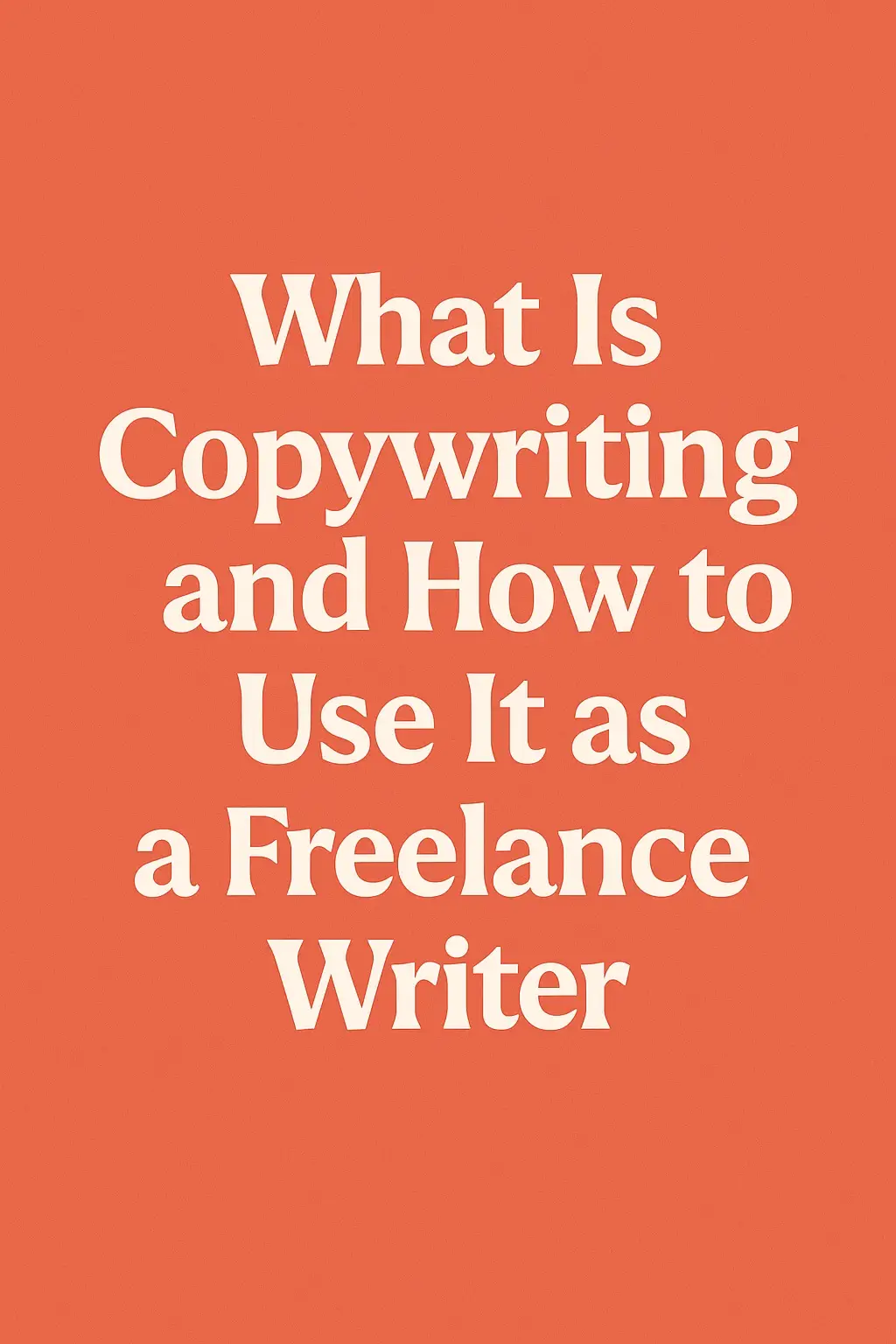Copywriting is one of the most powerful — and profitable — writing skills a freelancer can develop. While content writing focuses on informing or educating, copywriting is designed to persuade. Whether it’s encouraging someone to subscribe to a newsletter, buy a product, or click a link, the goal of copywriting is action. If you’re a freelance writer looking to expand your skillset or increase your income, mastering copywriting is a strategic move.
Understanding the Difference Between Copywriting and Content Writing
Before diving into techniques, it’s important to distinguish between two often-confused terms:
- Content Writing: Educates, informs, or entertains. Examples include blog posts, guides, and articles.
- Copywriting: Persuades the reader to take a specific action. Examples include ads, sales pages, email campaigns, and product descriptions.
Some types of writing blend both. A great blog post, for example, may end with a strong call-to-action that turns passive readers into subscribers.
Why Copywriting Is Valuable for Freelancers
Clients are willing to pay more for writing that generates results. A great blog post may bring traffic, but a high-converting sales page can generate revenue directly. That’s why businesses often allocate larger budgets to copywriting than to other forms of content.
Benefits of learning copywriting:
- Higher rates for specialized writing
- More long-term and retainer clients
- Broader range of project types
- Increased value as a marketing partner, not just a writer
Core Principles of Great Copywriting
Here are the foundational principles that will elevate your copywriting:
1. Know Your Audience
Good copy starts with empathy. You must understand the audience’s pain points, desires, fears, and motivations. Great copy doesn’t just describe a product — it tells the reader why it matters to them.
Use techniques like:
- Buyer personas
- Market research
- Direct interviews
- Survey data
2. Focus on Benefits, Not Just Features
Clients often give you a list of features. Your job is to turn those into benefits.
Feature: This keyboard has backlit keys.
Benefit: You can work comfortably even in low light without straining your eyes.
3. Use the PAS Formula
A simple yet effective structure for persuasive writing:
- Problem – Identify the reader’s challenge.
- Agitate – Emphasize the pain or frustration it causes.
- Solution – Offer your product, service, or idea as the answer.
This approach taps into emotions and creates a natural flow toward conversion.
4. Create Strong Calls-to-Action (CTAs)
Don’t assume the reader knows what to do next. Effective CTAs are:
- Clear: “Download the guide now”
- Actionable: Use strong verbs like “get”, “start”, or “try”
- Urgent: “Limited-time offer” or “Only 3 spots left!”
Where Freelance Copywriters Can Find Work
As a freelance writer, adding copywriting to your services opens new doors. Here are some project types and clients that commonly need copywriters:
- E-commerce stores (product descriptions, emails)
- Coaches and consultants (landing pages, lead magnets)
- SaaS companies (website copy, onboarding flows)
- Marketing agencies (ads, sales funnels)
- Startups (brand messaging, pitch decks)
Freelance marketplaces, cold pitching, and LinkedIn outreach are good ways to get started.
Copywriting Niches You Can Specialize In
Choosing a niche allows you to become a trusted expert. Some high-paying copywriting niches include:
- Email marketing: Writing automated sequences, newsletters, sales emails
- Direct-response ads: Facebook, Google, and Instagram ads
- Sales pages: Long-form persuasive content for online courses or digital products
- Website copy: Homepages, About pages, service pages
The more specialized and result-driven your niche, the more you can charge.
Tools Every Copywriter Should Know
You don’t need a fancy setup, but the right tools can enhance your work.
- Grammarly or ProWritingAid: Improve clarity and grammar
- Hemingway App: Simplify your writing
- A/B Testing Tools: Like Google Optimize or ConvertKit for testing CTAs
- Headline Analyzers: From CoSchedule or Sharethrough
- Swipe Files: Save successful ads, emails, and landing pages for inspiration
How to Learn Copywriting as a Beginner
You don’t need to go to school to become a copywriter. Here are some effective ways to learn:
- Books: Start with “The Adweek Copywriting Handbook” or “Everybody Writes” by Ann Handley
- Online Courses: Platforms like Coursera, Skillshare, and Copyhackers
- Practice: Rewrite ads or product pages you find online. Create your own samples.
- Freelance Projects: Offer discounted or trial services to early clients to gain testimonials and experience
Building a Copywriting Portfolio
Your portfolio doesn’t need to be packed with client work at first. You can create spec samples based on mock brands or personal projects.
- Choose 2–3 industries
- Write mock emails, landing pages, or ad copy
- Present them on a personal website or Behance
Over time, swap these out for paid projects and track the results when possible (e.g., increased conversions or CTRs).
Final Thoughts: Add Persuasion to Your Writing Toolbox
You don’t need to stop being a content writer to be a copywriter — many successful freelancers are both. But adding persuasive writing to your skills gives you an edge in a crowded market and helps you attract higher-value clients.
